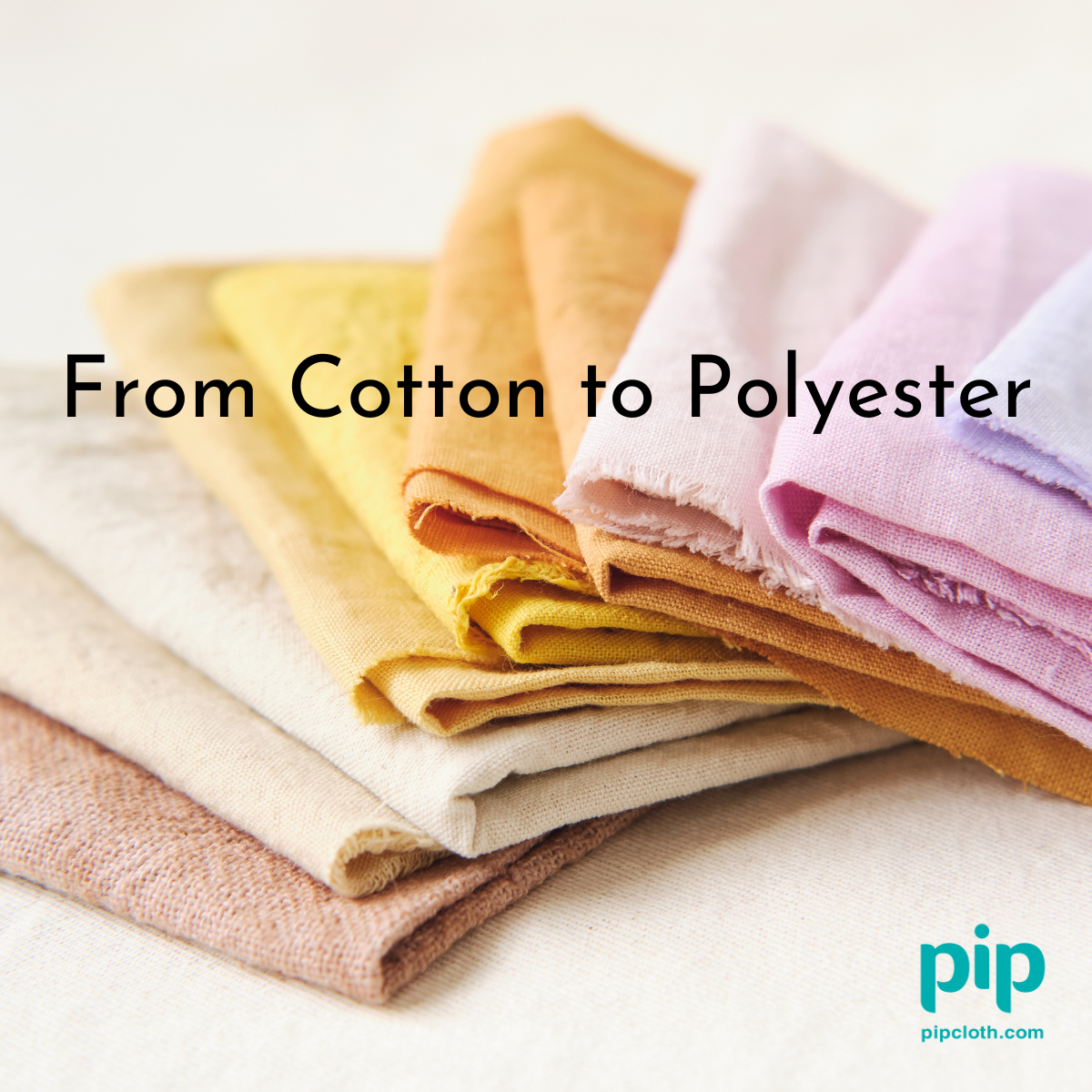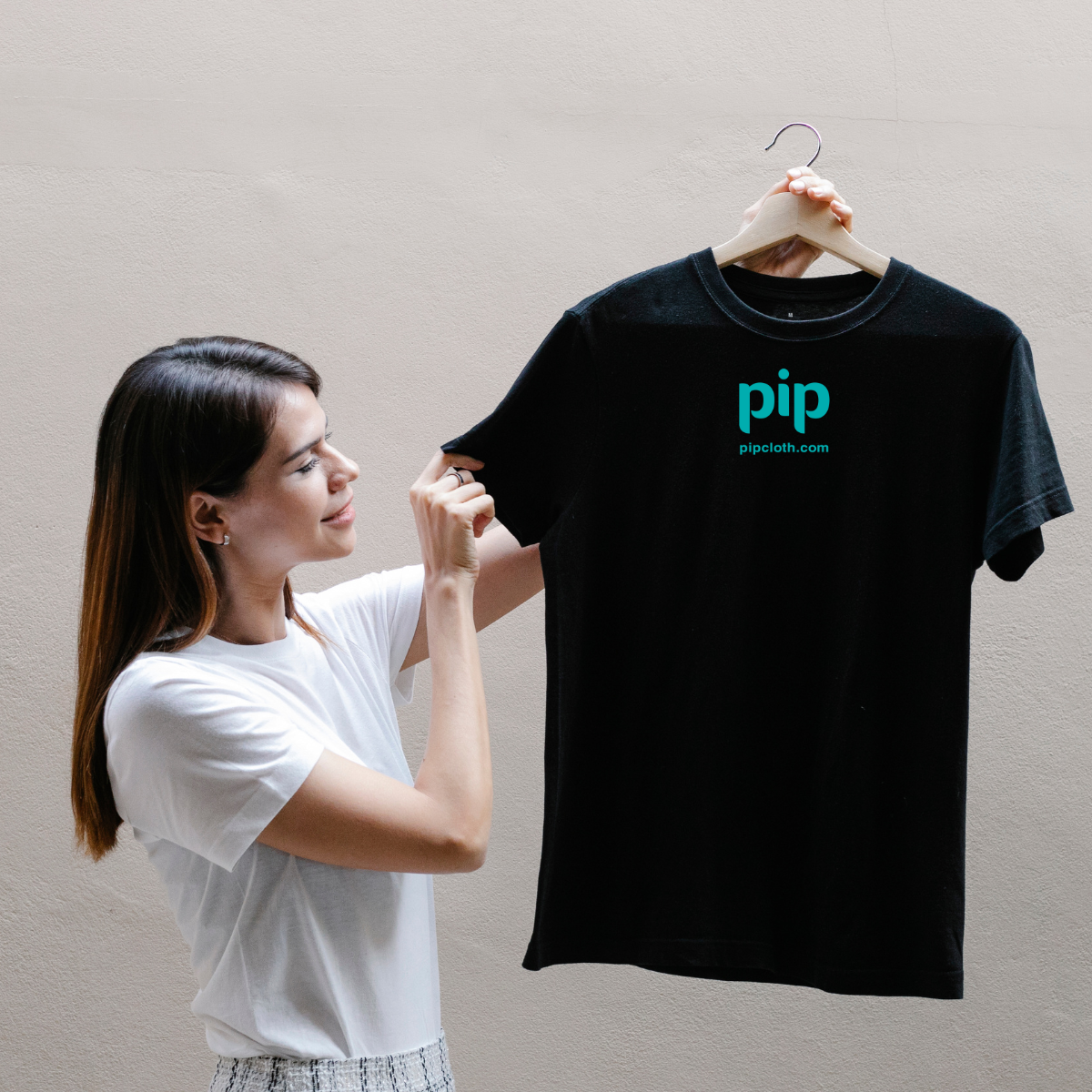The Journey of a T-Shirt: Exploring the Manufacturing Process from Concept to Completion
Designing the Perfect T-Shirt
The t-shirt manufacturing process begins with the design phase. Designers create sketches, illustrations, or digital artwork that captures the desired look and feel of the t-shirt. They consider factors such as color schemes, graphics, text, and placement to create a visually appealing and marketable design.
Choosing the Right Fabric
Selecting the appropriate fabric is crucial for creating a comfortable, durable, and high-quality t-shirt. Common fabric choices include cotton, polyester, and blends. Factors such as weight, texture, and stretchability are considered based on the intended style and purpose of the t-shirt.
Creating the Screen or Digital Print
Once the design is finalized, it is separated into individual colors and translated onto screens for screen printing or prepared for digital printing. Screen printing involves creating a separate screen for each color in the design, while digital printing allows for the direct application of the design onto the fabric using specialized printers.
Cutting and Sewing the T-Shirt
The chosen fabric is cut into the desired t-shirt shape using patterns or templates. Skilled workers then sew the pieces together using industrial sewing machines, paying close attention to details such as seam allowances, hems, and necklines to ensure a professional finish.
Printing the Design onto the T-Shirt
The prepared screens or digital files are used to print the design onto the sewn t-shirt. Screen printing involves applying ink through the screens onto the fabric, while digital printing uses heat to transfer the design directly onto the garment. The printing process requires precision and skill to ensure a high-quality, long-lasting result.
Quality Control and Finishing Touches
After printing, the t-shirts undergo a thorough quality control process to check for any defects, misalignments, or inconsistencies. Any necessary corrections or touch-ups are made at this stage. The t-shirts are then washed, dried, and pressed to remove any excess ink or wrinkles, resulting in a polished final product.
Packaging and Distribution
The completed t-shirts are folded, tagged, and packaged according to the brand’s specifications. They are then shipped to warehouses, retail stores, or directly to customers, ready to be worn and enjoyed.
Understanding the t-shirt manufacturing process from sketch to final product gives you a deeper appreciation for the skill, creativity, and attention to detail that goes into creating the perfect t-shirt. By familiarizing yourself with each step of the journey, you can make informed decisions when designing, producing, or purchasing t-shirts for your brand or personal collection.
Introduction
T-shirts are a staple in wardrobes worldwide, with the global t-shirt market size expected to reach USD 38.1 billion by 2028, according to a report by Grand View Research. The journey from a designer’s sketch to the finished product involves numerous intricate steps, each playing a crucial role in the t-shirt’s quality and appearance. This article will provide an in-depth exploration of the t-shirt manufacturing process, covering key stages such as design conceptualization, fabric selection, pattern making, sewing, screen printing, quality control, packaging, and distribution. Additionally, we will discuss the growing importance of sustainability and ethical practices in the industry and examine future trends shaping t-shirt production.
Design and Conceptualization:
The t-shirt manufacturing process starts with a spark of creativity in the designer’s mind. Designers draw inspiration from diverse sources, including:
- Current fashion trends
- Cultural influences
- Target audience preferences
A survey by Cotton Incorporated found that 70% of consumers prefer cotton t-shirts, influencing fabric choice in the design stage. Designers create hand-drawn sketches and digital mockups using tools like Adobe Illustrator, with an average of 5-10 iterations before finalizing the design. Tech packs, containing detailed specifications, are then created, including:
- Measurements
- Pantone colors
- Fabric type and weight
- Stitching and embellishment requirements
These technical documents ensure accurate communication between the design and production teams.

Fabric Selection and Preparation:
Selecting the right fabric is essential for creating a comfortable, durable, and visually appealing t-shirt. Common fabric choices include:
- Cotton: Known for its breathability and softness, cotton accounts for 85% of the raw materials used in t-shirt production.
- Polyester: Valued for its durability and moisture-wicking properties, polyester is often used in performance t-shirts.
- Blends: Combining cotton and polyester offers the best of both materials, with a 50/50 blend being the most popular.
Factors like cost, sustainability, and intended use guide fabric selection. Once chosen, the fabric undergoes preparation processes such as:
- Pre-shrinking: Helps maintain the t-shirt’s size and shape after washing.
- Dyeing: Pantone color standards ensure consistent coloration across production runs.
- Printing: Techniques like rotary screen printing and digital printing are used for designs and patterns.

Pattern Making and Grading:
Accurate patterns are the foundation of a well-fitting t-shirt. Pattern makers use CAD software like CLO3D or Optitex to create digital patterns based on the design specifications. Key considerations include:
- Ease and fit: Allowing for comfortable movement and drape.
- Seam allowances: Typically ranging from 1/4 inch to 5/8 inch.
- Notches and markings: Guiding the sewing process for accurate assembly.
Grading, the process of creating different sizes, follows standardized size charts, with an average of 5-7 sizes per t-shirt style. Specialized software like Gerber AccuMark and Lectra Modaris automate the grading process, ensuring consistency across sizes.
Sewing and Garment Construction:
The sewing stage brings the t-shirt to life, transforming flat fabric pieces into a three-dimensional garment. Industrial sewing machines, operated by skilled technicians, perform various functions:
| Machine Type | Function | Seam Type |
| Overlock | Seaming and finishing raw edges | 4-thread or 5-thread safety stitch |
| Flatlock | Creating flat, durable seams | Butted seam or lapped seam |
| Cover stitch | Hemming and topstitching | Double-needle or triple-needle |
A typical t-shirt consists of 4 main components: front, back, sleeves, and neckband. The sewing process follows a specific order, starting with the shoulder seams, then attaching the sleeves, sewing the side seams, and finally attaching the neckband. On average, a skilled sewing operator can produce 80-100 t-shirts per hour.
From Cotton to Polyester: Exploring the World of T-Shirt Materials
Screen Printing and Embellishments:
Screen printing is the most common method for applying designs to t-shirts, known for its versatility and durability. The process involves:
- Creating a stencil (screen) for each color in the design.
- Applying ink through the screen onto the t-shirt using a squeegee.
- Curing the ink using heat (typically at 320°F-356°F) to ensure longevity.
A skilled printer can produce 100-200 prints per hour, depending on the design complexity. Other embellishment techniques include:
- Embroidery: Using a computerized embroidery machine to stitch designs onto the t-shirt.
- Applique: Attaching pre-cut fabric shapes to create layered designs.
- Heat transfer: Applying heat-activated graphics using a heat press machine.
Quality Assurance and Inspection:
Ensuring consistent quality is crucial for customer satisfaction and brand reputation. Quality control measures are implemented at various stages:
| Inspection Point | Checks Performed |
| Fabric Inspection | – Defects, color consistency, weight |
| Cutting Inspection | – Accuracy, pattern alignment, cut quality |
| Sewing Inspection | – Seam strength, stitching quality, measurements |
| Printing Inspection | – Registration, ink coverage, color accuracy |
| Final Inspection | – Overall appearance, packaging, labeling |
On average, 2-3% of t-shirts are rejected during the quality control process. Manufacturers aim to minimize this percentage through continuous improvement and root cause analysis.
Packaging and Distribution:
The final stage of the t-shirt manufacturing process involves packaging and distribution. T-shirts are typically folded using automated machines, which can process 500-1000 pieces per hour. Packaging options include:
- Individual polybags
- Bulk packing in boxes or cartons
- Hangable packaging for retail display
Labels and tags, including size, care instructions, and brand information, are attached to the t-shirts. Distribution channels vary based on the target market:
- Wholesale to retailers and distributors
- Direct-to-consumer through e-commerce platforms
- Dropshipping to end customers
Efficient inventory management and order tracking systems are essential for timely delivery and customer satisfaction.

Sustainability and Ethical Considerations:
The fashion industry, including t-shirt manufacturing, has a significant environmental and social impact. Sustainable practices are gaining traction, with a focus on:
- Organic cotton: Grown without harmful pesticides and chemicals, reducing environmental damage.
- Recycled polyester: Made from post-consumer plastic waste, reducing landfill waste and carbon footprint.
- Low-impact dyes: Using natural or water-based dyes to minimize water pollution and chemical usage.
Ethical manufacturing practices, such as fair wages, safe working conditions, and the elimination of child labor, are also becoming increasingly important. Certifications like GOTS (Global Organic Textile Standard) and Fair Trade ensure compliance with sustainability and ethical standards.

Innovations and Future Trends:
The t-shirt manufacturing industry is embracing technological advancements and innovative solutions:
- Digital printing: Enabling high-quality, full-color designs with no minimum order quantities.
- 3D modeling and virtual sampling: Reducing the need for physical prototypes and saving time and resources.
- Automated sewing and cutting: Improving efficiency and consistency in production processes.
- On-demand production: Allowing for personalized designs and reducing inventory waste.
- Circular economy: Implementing closed-loop systems for recycling and upcycling t-shirts.
As consumers become more conscious of the impact of their purchasing decisions, the t-shirt manufacturing industry is adapting to meet the demand for sustainable, ethically-produced garments.
The t-shirt manufacturing process is a complex and fascinating journey, involving a harmonious blend of creativity, technical expertise, and attention to detail. From the initial design concept to the final packaged product, each stage plays a vital role in creating a high-quality, comfortable, and visually appealing t-shirt. As the industry evolves, manufacturers are embracing sustainable practices, ethical production, and innovative technologies to meet changing consumer demands and reduce their environmental impact. By understanding the intricacies of the t-shirt manufacturing process, consumers can make informed decisions and support brands that align with their values. As the global t-shirt market continues to grow, the industry will undoubtedly witness exciting developments and transformations, shaping the future of this beloved wardrobe staple.
FAQ Section:
Q1: What is the average lead time for t-shirt production?
A: The average lead time for t-shirt production is 4-6 weeks, depending on factors such as order quantity, design complexity, and chosen manufacturing location. Larger orders and more intricate designs may require longer lead times, while smaller, simpler orders can be completed in as little as 2-3 weeks.
Q2: How do manufacturers ensure consistent sizing across different t-shirt styles and fabrics?
A: Manufacturers use standardized size charts and grading techniques to ensure consistent sizing across different t-shirt styles and fabrics. They also create prototypes and conduct fit tests on various body types to refine the sizing and fit of each style. Additionally, they may use advanced technologies like 3D modeling and virtual sampling to visualize and adjust sizing before production begins.
Q3: What are the most common printing techniques used for t-shirt designs?
A: The most common printing techniques for t-shirt designs include:
- Screen printing: Used for designs with 1-6 colors, ideal for larger quantities
- Digital printing: Used for full-color, highly detailed designs, suitable for smaller quantities
- Heat transfer: Used for applying pre-printed designs using a heat press
- Sublimation: Used for all-over, full-color prints on light-colored polyester fabrics
Q4: How do manufacturers minimize waste and environmental impact during t-shirt production?
A: Manufacturers can minimize waste and environmental impact by implementing various strategies, such as:
- Using eco-friendly fabrics like organic cotton, recycled polyester, and hemp
- Adopting water-saving technologies like low liquor ratio dyeing and ozone washing
- Implementing zero-waste cutting techniques and recycling fabric scraps
- Investing in renewable energy sources like solar and wind power for production facilities
- Partnering with suppliers and vendors who prioritize sustainability and ethical practices
Q5: What are the benefits of using organic cotton in t-shirt manufacturing?
A: Organic cotton offers several benefits in t-shirt manufacturing, including:
- Reduced environmental impact: Organic cotton is grown without harmful pesticides and chemicals, minimizing soil and water pollution.
- Improved fabric quality: Organic cotton fibers are often longer and stronger, resulting in softer, more durable fabrics.
- Health benefits for farmers and consumers: Organic cotton production reduces exposure to toxic chemicals for both farmers and end-users.
- Increased consumer appeal: Many consumers prefer eco-friendly and ethically-produced clothing, making organic cotton t-shirts more attractive in the market.
Q6: How can t-shirt manufacturers ensure fair labor practices and worker well-being?
A: T-shirt manufacturers can ensure fair labor practices and worker well-being by:
- Conducting regular audits and inspections of production facilities
- Implementing strict codes of conduct and ethical guidelines for suppliers and vendors
- Providing fair wages, safe working conditions, and benefits to workers
- Investing in worker training, education, and development programs
- Partnering with organizations that promote labor rights and social responsibility, such as the Fair Labor Association and the Ethical Trading Initiative
Q7: What role does inventory management play in the t-shirt manufacturing process?
A: Inventory management plays a crucial role in the t-shirt manufacturing process by:
- Ensuring adequate supplies of raw materials, such as fabrics, threads, and trims, to avoid production delays
- Optimizing stock levels of finished goods to meet customer demand while minimizing excess inventory and storage costs
- Facilitating accurate order tracking and timely delivery to customers
- Enabling data-driven decision making for production planning, forecasting, and continuous improvement
Q8: How can t-shirt manufacturers leverage technology to improve efficiency and quality?
A: T-shirt manufacturers can leverage technology to improve efficiency and quality in various ways, such as:
- Implementing automated cutting and sewing systems to increase speed and consistency
- Using 3D modeling and virtual sampling to reduce the need for physical prototypes and streamline the design process
- Investing in advanced printing technologies like digital and sublimation printing for high-quality, versatile designs
- Adopting RFID and barcode tracking systems for real-time inventory visibility and order tracking
- Utilizing data analytics and machine learning to optimize production processes and predict demand
Q9: What are the advantages of on-demand t-shirt production?
A: On-demand t-shirt production offers several advantages, including:
- Reduced inventory risk: Producing t-shirts only when ordered minimizes the risk of unsold inventory and associated storage costs.
- Increased customization: On-demand production allows for personalized designs and small batch runs, catering to individual customer preferences.
- Faster turnaround times: With no need to maintain large inventories, on-demand production can often deliver finished products more quickly.
- Lower environmental impact: By producing only what is needed, on-demand manufacturing reduces waste and excess production.
Q10: How can t-shirt manufacturers adapt to changing consumer preferences and market trends?
A: T-shirt manufacturers can adapt to changing consumer preferences and market trends by:
- Conducting regular market research and consumer surveys to stay informed about evolving tastes and demands
- Collaborating with fashion designers, influencers, and trend forecasters to develop fresh, relevant designs
- Investing in flexible production systems and technologies that allow for quick response to market changes
- Offering customization options and limited-edition releases to cater to consumers’ desire for unique, exclusive products
- Prioritizing sustainability, transparency, and ethical practices to align with growing consumer awareness and values





